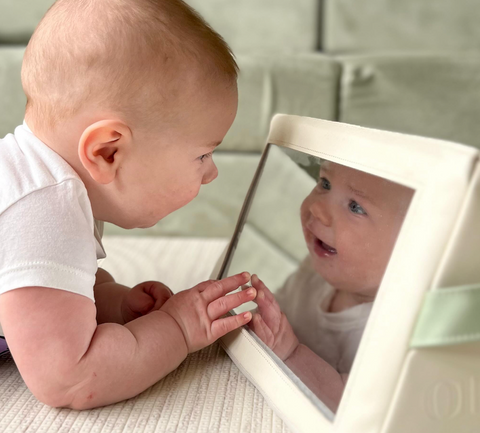
When Your Kids Have Too Much 'Stuff' - How To Cut Down On The Extra Gifts
Do your kids have too much stuff? It happens so easily. All the tips on how to cut down on the presents without sounding rude or offending your loved ones.
Families are often overwhelmed by an excess of possessions, toys, and belongings, making it challenging to maintain cleanliness and organization.

An organised space for your child is knowing when to say "no" to more 'stuff'
In society, the prevalence of children receiving numerous gifts has grown considerably.
Although gifts are customary expressions of affection and celebration, they can contribute to unwanted clutter.
How can we shift our focus to prioritize quality over quantity in the gifts our children receive? How can we navigate the desire to spoil our kids while emphasizing the significance of experiences and meaningful connections over material possessions?
We will explore effective strategies for reducing excessive gift-giving.
How to cut back on gift giving
Get on the same page
Engage in a constructive conversation with your partner to align your perspectives on gift-giving and establish guidelines that best fit your family. Reflect on the preferred forms of gift-giving that align with your values and discuss the necessary steps to implement them effectively.
Consider if there is a specific individual, be it a friend or family member, who requires addressing the issue. If so, strategise how to approach the conversation with sensitivity and open communication, ensuring that everyone's concerns are acknowledged and discussed.
Determine together who should take the lead in initiating the discussion to foster a productive and respectful dialogue.
Set Boundaries with Friends and Family
Establishing boundaries is crucial as they provide a structure for maintaining healthy relationships and practising self-care.
By setting clear boundaries, you define your expectations and standards that others should respect and adhere to which can decrease resentment and conflict.
This empowers you to create an environment where your needs and well-being are prioritized and honoured.
Give warning
It is important to provide ample notice when establishing your preferred gift-giving rules. Once you have decided on the guidelines, ensure clear communication with those around you well in advance.
Avoid waiting until two weeks before Christmas or any other occasion when others may have already purchased gifts for your children. By giving early notice, you allow them sufficient time to generate ideas and make alternative arrangements without feeling rushed or pressured by time constraints.
This approach fosters a more considerate and understanding environment, ensuring that everyone is on the same page and can plan accordingly.
How to set boundaries respectfully
Remember that they have good intentions!
When you find yourself in a situation where you don't want your kids to be given gifts, it's important to remember that the people offering them have good intentions.
While you may have specific reasons for not wanting your children to receive gifts, it's crucial to approach the situation with empathy and gratitude. When discussing this matter with family or friends, it's essential to acknowledge and appreciate their intentions.
Recognise that their gesture of wanting to give your children gifts comes from a place of love and kindness.
By expressing your gratitude for their thoughtfulness, you can maintain a positive and open line of communication.
They may get offended
When discussing boundaries, it's crucial to remember that some individuals may feel offended or hurt by the conversation. It's important to approach the discussion with empathy and respect for their feelings.
Acknowledge and validate their emotions, showing that you understand their perspective. However, it's equally essential to stand firm in upholding your boundaries.
Communicate the reasons behind your decisions clearly, emphasizing that it's not a reflection of their worth or the value of their previous gifts.
Reiterate your intention to prioritize experiences and meaningful connections over material possessions. By balancing sensitivity and assertiveness, you can navigate these conversations while maintaining respect for everyone involved.
Express Appreciation
When someone respects your boundaries, take a moment to sincerely thank them for their understanding and support. Let them know how much you appreciate their willingness to adapt to the new guidelines.
Acknowledge their efforts in considering alternative ways to show love and appreciation, such as focusing on experiences or meaningful gestures.
Send Updates

A photo to send of thier experience
To demonstrate the value and impact of others' thoughtful gifts or contributions, make a point to send them updates when your children use those gifts or have meaningful experiences.
By sharing these moments, you show your genuine appreciation and reinforce the importance of their gesture.
Whether it's a photo of your child playing at the event gift they received or a heartfelt message about a memorable experience, these updates create a tangible connection between their generosity and the happiness it brings and they are much more likely to find this rewarding and continue upholding your values in the future.
What are some gift alternatives that aren’t toys?
Make sure when discussing your new gift giving rules with loved ones that you make sure to give them some meaningful ideas. These could include…
- Clothes: Maybe they have grown out of their winter clothing or need some new shoes.
- Playmats: The perfect gift for a baby, as they can use it for some many years to come.

- Memories: A personalised photo book or a special box they can put special items into are a great idea.

A keep sake like an artwork
- Passes: Theme parks and zoos often have annual passes that can be purchased for many fun outings.
- Experiences: Bowling, minigolf, indoor playgrounds, movies, tree top climbing are all special occasion outings that kids will enjoy.
- Money: Maybe contributing to their savings or putting some money aside yearly for their future is a good idea. They can later use it to help buy a car, travel or move out.
- Educational: For babies this could be something like the TumTune. Babies experience a sensory extravaganza with The TumTime! It's not just a tummy time toy, it's a tool for sensory development, motor skills, and emotional growth.

- Bedding: For little ones this might be baby swaddles and sleeping bags. For bigger kids, maybe a new doona cover set.

Baby Swaddle instead of a toy
Companion gift ideas
Also referred to as complementary gifts, they are selected to enhance the overall enjoyment or practical use of the main gift.
They encourage shared experiences or provide resources that enrich the recipient's interaction with the primary gift, creating a more comprehensive and fulfilling gift-giving experience.
The possibilities are truly endless, allowing for personalization based on the child's specific interests and needs. Tailoring the companion gift to align with the child's passions and preferences adds an extra layer of thoughtfulness to the overall gift-giving experience.
For example, if the child is an aspiring artist, you could pair a set of high-quality art supplies with a sketchbook to inspire their creativity.
If they have a love for outdoor activities, a companion gift could be a hiking guidebook or a new water bottle for their adventures.
This personalised touch demonstrates your attentiveness and makes the gift even more meaningful to the child.
Need / Want / Wear Gift Rule
The "Need, Want, Wear" rule is a helpful guideline that many people follow, especially during the holiday season.
This rule suggests considering three categories when selecting gifts: something your child needs, something they want, and something they can wear.
By adhering to this rule, loved ones can give gifts that are practical and won’t sit on a shelf gathering dust.
For example, your child might need a playmat, as you have floor boards in your house, they might want a toy car, and they might wear a swaddle.

Minimal gift giving approach
Adopting a minimal gift-giving approach allows us the freedom to prioritize what is truly important in life.
By establishing boundaries and effectively communicating our values, we create an environment that fosters deeper connections and more meaningful experiences. By reducing the number of material possessions our children acquire, we effectively minimize clutter and alleviate stress.
Shifting away from giving toys as gifts enables us to break free from the cycle of accumulating material possessions, placing greater emphasis on gratitude and valuing quality over quantity.
This intentional approach empowers us to embrace a more fulfilling and purposeful way of living.
**************
Written by Laura Agrimi, mother of 2 and owner of Grace & Maggie.
Online store - Open 24 hours
orders@graceandmaggie.com.au
PO Box 2852, Cheltenham, VIC 3192
Melbourne, Victoria, Australia
 Shop Now with Afterpay
Shop Now with Afterpay 